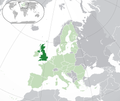Click here to register!
Difference between revisions of "United Kingdom Energy Situation"
***** (***** | *****) m |
***** (***** | *****) |
||
| Line 23: | Line 23: | ||
= Policy Framework, Laws and Regulations = | = Policy Framework, Laws and Regulations = | ||
| + | *EU‘s Large Combustion Plant Directive , 2001: Under this Initiative., many old coal power plants were shut down and emission form large thermal plant was reduced. | ||
| + | |||
| + | *Climate change Act 2008 | ||
| + | Budget 1 (2008–12): 3018 MtCO2e (25% below 1990 baseline) | ||
| + | Budget 2 ( 2013–17): 2782 MtCO2e (31% below baseline) | ||
| + | Budget 3 (2018–22): 2544 MtCO2e (37% below baseline by 2020 ) | ||
| + | Budget 4 (2023- 2027): 1959 MtCO2e (51% below baseline by 2025) | ||
| + | Budget 5 (2028- 2032): 1725 MtCO2e (57% below baseline by 2030) – after Brexit | ||
| + | Overall target of reducing GHG by 80% of 1990 levels by 2050. | ||
| + | |||
| + | *Carbon Tax 2013-2020: Carbon tax, known as the carbon price floor, was introduced in 2013 to charge fossil fuel power plants for their carbon emissions. As of 2018, the carbon tax is £18 ($25) per ton of carbon dioxide emitted in producing electricity. Since UK is also a member of [https://ec.europa.eu/clima/policies/ets_en EU's emission trading scheme], it also pays a market-based price for for carbon credits, which is about £5 per ton of CO2. <ref>http://www.telegraph.co.uk/business/2017/11/15/carbon-tax-thrusts-britain-towards-top-low-carbon-energy-league/</ref> | ||
| + | |||
| + | * Renewable Transport Fuel Obligation (RTFO): Under this policy, suppliers of transport and non road mobile machinery (NRMM) fuel in the UK must show that a percentage of the fuel they supply comes from renewable and sustainable sources. Fuel suppliers who supply at least 450,000 litres of fuel a year are affected. This includes suppliers of biofuels as well as suppliers of fossil fuel. | ||
Revision as of 12:23, 12 June 2018
Capital:
London
Region:
Coordinates:
51.5000° N, 0.1167° W
Total Area (km²): It includes a country's total area, including areas under inland bodies of water and some coastal waterways.
243,610
Population: It is based on the de facto definition of population, which counts all residents regardless of legal status or citizenship--except for refugees not permanently settled in the country of asylum, who are generally considered part of the population of their country of origin.
66,971,395 (2022)
Rural Population (% of total population): It refers to people living in rural areas as defined by national statistical offices. It is calculated as the difference between total population and urban population.
16 (2022)
GDP (current US$): It is the sum of gross value added by all resident producers in the economy plus any product taxes and minus any subsidies not included in the value of the products. It is calculated without making deductions for depreciation of fabricated assets or for depletion and degradation of natural resources.
3,089,072,722,400 (2022)
GDP Per Capita (current US$): It is gross domestic product divided by midyear population
46,125.26 (2022)
Access to Electricity (% of population): It is the percentage of population with access to electricity.
100.00 (2021)
Energy Imports Net (% of energy use): It is estimated as energy use less production, both measured in oil equivalents. A negative value indicates that the country is a net exporter. Energy use refers to use of primary energy before transformation to other end-use fuels, which is equal to indigenous production plus imports and stock changes, minus exports and fuels supplied to ships and aircraft engaged in international transport.
34.63 (2015)
Fossil Fuel Energy Consumption (% of total): It comprises coal, oil, petroleum, and natural gas products.
80.35 (2015)
Introduction
Energy Situation
Renewable Energy
Fossil Fuel
Key Problems of the Energy Sector
Policy Framework, Laws and Regulations
- EU‘s Large Combustion Plant Directive , 2001: Under this Initiative., many old coal power plants were shut down and emission form large thermal plant was reduced.
- Climate change Act 2008
Budget 1 (2008–12): 3018 MtCO2e (25% below 1990 baseline) Budget 2 ( 2013–17): 2782 MtCO2e (31% below baseline) Budget 3 (2018–22): 2544 MtCO2e (37% below baseline by 2020 ) Budget 4 (2023- 2027): 1959 MtCO2e (51% below baseline by 2025) Budget 5 (2028- 2032): 1725 MtCO2e (57% below baseline by 2030) – after Brexit Overall target of reducing GHG by 80% of 1990 levels by 2050.
- Carbon Tax 2013-2020: Carbon tax, known as the carbon price floor, was introduced in 2013 to charge fossil fuel power plants for their carbon emissions. As of 2018, the carbon tax is £18 ($25) per ton of carbon dioxide emitted in producing electricity. Since UK is also a member of EU's emission trading scheme, it also pays a market-based price for for carbon credits, which is about £5 per ton of CO2. [1]
- Renewable Transport Fuel Obligation (RTFO): Under this policy, suppliers of transport and non road mobile machinery (NRMM) fuel in the UK must show that a percentage of the fuel they supply comes from renewable and sustainable sources. Fuel suppliers who supply at least 450,000 litres of fuel a year are affected. This includes suppliers of biofuels as well as suppliers of fossil fuel.





















